Complete guide to visiting Rocky Mountain National Park in Colorado, including things to do, camping, hiking, lodging near the park, history, and so much more.
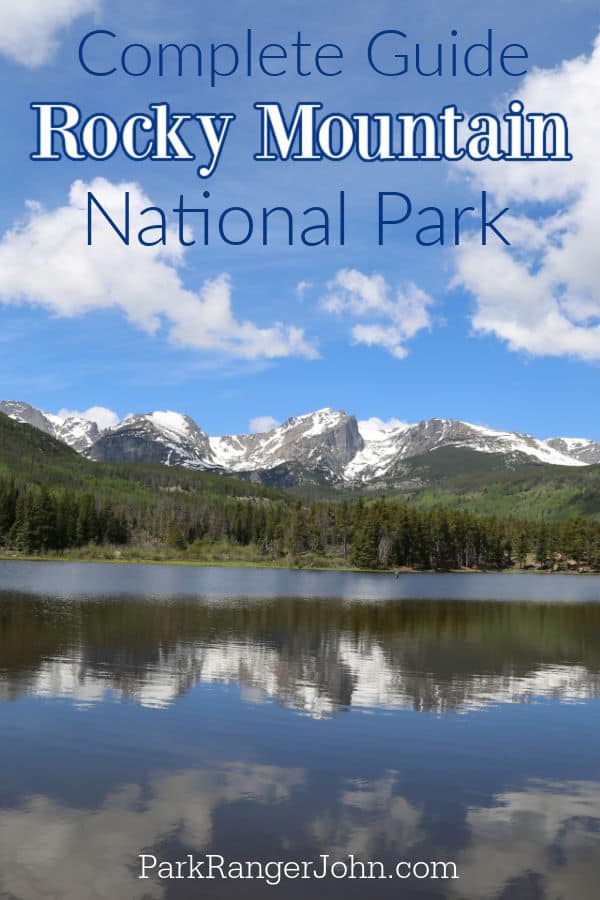
Rocky Mountain National Park
Located in Northern Colorado, an oasis of diverse landscapes, scenic lookouts, and natural marvels, is the Rocky Mountain National Park.
Spread across 265,807 acres, the park is known for its pristine lakes, breathtaking mountain peaks, and much more, making it one of the most visited national parks in the country.
Home to iconic winding roads like the Old Fall River Road and Trail Ridge Road that take you through lush green forests and bubbling rivers, Long’s Peak (the park’s tallest peak) that boasts an awe-inspiring view of the region, Bear Lake, and so much more.
While you’re in the park, it’s almost impossible to go the entire trip without spotting any wild animals because Chipmunks, Elk, Mule deer, exotic birds, and more are frequently spotted at iconic attractions in the Rockies.
There are a plethora of things to see and get immersed in, so be sure to plan a trip of a minimum of three days, carry your essentials, and discover the beauty of the Rockies at Rocky Mountain National Park for a journey that you’re sure to remember!
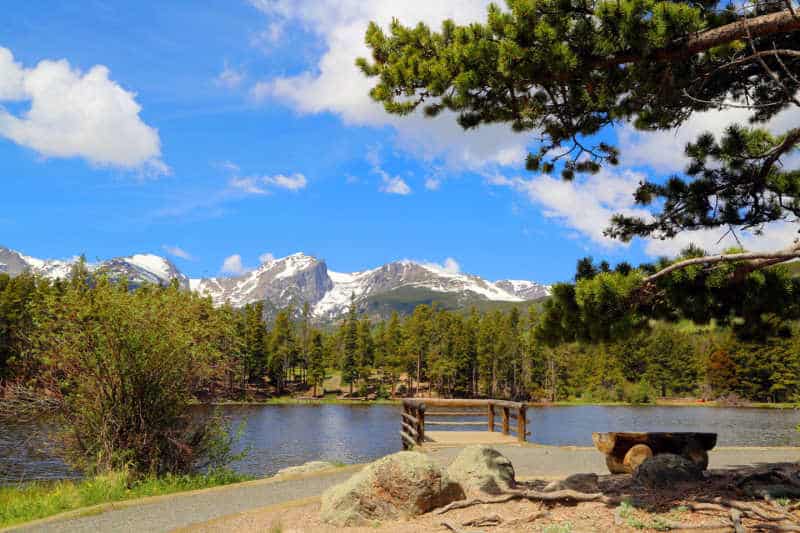
About Rocky Mountain National Park
Nestled in the valleys and peaks of the Rockies, Rocky Mountain National Park is a natural jewel located in Northern Colorado. The park houses several pristine lakes, iconic trails, panoramic overlooks, diverse wildlife, and has a vibrant history!
Though it’s not nearly as big as many other US national parks, it certainly has so much to do within its 265,807 acres that will charm you and take your breath away!
The park is known for two scenic drives; Trail Ridge Road and Old Fall River Road. Trail Ridge Road is, in fact, believed to be one of the most scenic routes in the world and is known to take travelers 4000 ft above in altitude within minutes.
Designated an All American Road, you’ll be surrounded by the Rocky Mountains in every direction you look on Trail Ridge Road, and you must plan sufficient time to tour it!
The expansive national park is also home to the massive Long’s Peak, which is the highest peak in the National Park as well as the Northern front range of the Rocky Mountains in North America and stands tall at 14,259-ft.
Due to the enormous glaciers and mountain peaks in the area, the national park is also home to many lakes that look like they’re out of a springtime dream.
The most iconic and photographed lake is Bear Lake, which is set at an altitude of nearly 10,000 ft but is accessible via an easy half-mile trail. The lake also leads to others in the region like Dream Lake, Mills Lake, Emerald Lake, and Sky Pond, to name a select few.
While there are so many other lakes spread across the entire region, each unique and picturesque in its own way, another lake that you must tour is the Grand Lake which is actually Colorado’s largest and deepest natural lake, a true natural marvel!
Rocky Mountain NP is truly the gift that keeps on giving as you’ll also be amidst alpine valleys that are home to some of the most majestic waterfalls you’ll ever see.
Though you will only be able to access most waterfalls after a short hike, the ultimate destination will genuinely be worth it.
There are around 30 named waterfalls in the region, out of which some noteworthy ones in the park are Alberta Falls, Glacier Falls, Thunder Falls, and Lyric Falls.
An alpine sanctuary, the Rocky Mountain National Park is infamously known as one of the top national parks to spot wildlife.
The park is known for its Elk (the population in the region is so large that it’s actually exclusively the Rocky Mountain Elk species), Mule Deer, Big Horn Sheep, Moose, Marmots, Chipmunks, Black Bears, Mountain Lions, and more.
The park is home to nearly 280 bird species, all of which survive in the unique and high-altitude weather of the Rockies.
The most sought-after bird in the national park is the white-tailed ptarmigan, one of the only species that inhabits the alpine zone but doesn’t migrate.
Though well-sought after, it’s actually quite tricky to spot, and the National Park Service recommends hiking on the tundra to find them.
The park has several hiking trails, biking routes, picnicking spots, camping grounds, scenic lookouts, horse-riding, picturesque drives, etc.
With its unique climate, the wintertime (though accessible with winter permits) truly transforms the diverse landscapes, allowing you to experience frozen lakes, snow-clad peaks, and campfire dinners that you’ll never forget.
Is Rocky Mountain National Park worth visiting?
Definitely Yes! This is one of the Iconic National Parks and is filled with wildlife, history, and jaw-dropping scenery. This is one of the parks that everyone that has been, wants to go back to! It's that incredible.
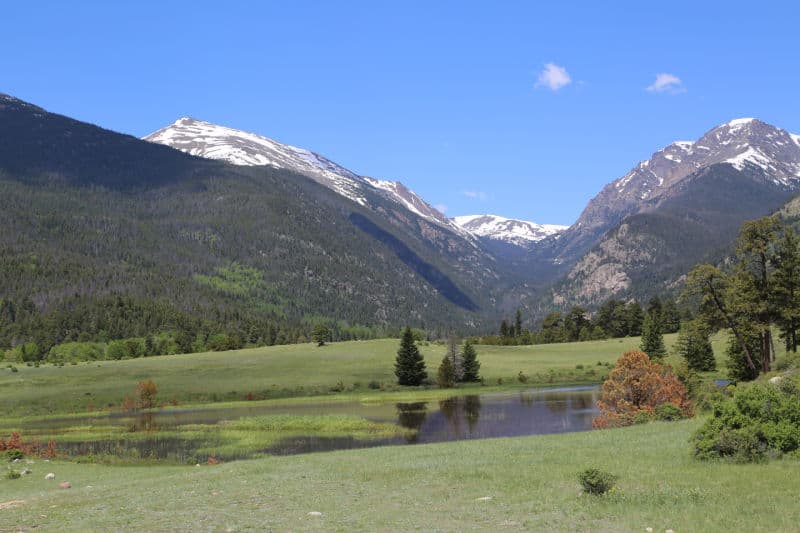
History of Rocky Mountain National Park
The natural landscapes of the Rocky Mountain National Park went through several phases of life were inhabited by numerous groups of people who contributed to its development and preservation, making it the jewel of Colorado that it is today.
It dates back to the time Paleo Indians inhabited the park. It is believed that they lived in and around the region for 11,000 years and witnessed now-extinct animals that they hunted in the area.
Within the park, several sites signify the presence of Native Americans from centuries ago.
In particular, the Utes used to carry boulders to mountain peaks as part of their tribal ceremonies that you’ll still be able to spot!
As the 19th century rolled around, there were a few European settlers in and around the park, primarily to hunt or fur-catch.
One of the most significant events for the park took place in 1820 when the President guided an expedition team to document the geology and details about the natural landscapes in the region.
The expedition was led by Stephen Harriman Long, a US Corps Engineer, after whom the infamous Longs Peak was named.
As these people arrived in the mid-1800s, their actions caused several Native Americans to pack up and leave the area by 1860, and the remaining tribes were forced out due to the reservations by the late 1870s.
Stephen Long’s expedition was followed by explorers like Joel Estes, Rufus B. Sage, Albert Bierstadt (after whom the beautiful Bierstadt Lake is named), Joseph Wescott, who were looking to hunt, explore the unique topography, and search for gold and silver in the area.
After several groups of people toured and even briefly inhabited the park, national interest was generated to create a preservation area in the Rocky Mountains of Colorado.
In the early 20th century, neighboring cities and towns became connected to the region, which is now the Rocky Mountain National Park like the Big Thompson Canyon Road.
Additionally, automobile stage lines joined Estes Park to Loveland and Lyons by 1909.
The creation of the national park in 1915 (a year prior to the formal establishment of the National Park Service) was supported by several individuals, such as Enos Mills (widely known as the Father of the Rocky Mountain National Park).
On January 26, 1915, Congress passed the bill, which was signed by President Woodrow Wilson, declaring the region a national park.
Following that, several other regions around the national park were also included as they were discovered and explored, including the Never Summer Mountain Range, which was added in 1929. The park has come a long way since.
While it has become the ultimate destination to explore the alpine valleys, spot wildlife, or even go skiing, it has been subjected to environmental destruction (particularly deadly wildfires) in the past two decades due to the alarming climate crisis.
With such a rich history and the combined efforts of so many different groups of people inhabiting in and preserving the nature of the region for centuries, the Rocky Mountain National Park is the gem that it is today, and totally worth spending a couple of days in for one of the most scenic trips of your life!
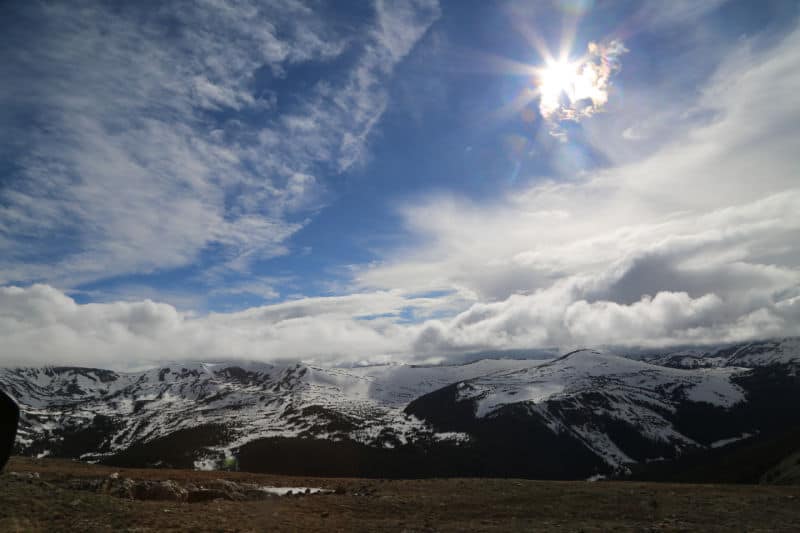
Things to know before your visit to Rocky Mountain National Park
Entrance fee
1 day pass - vehicle - $30.00
1-day pass - person - $15.00
1 day pass - motorcycle - $25.00
7-day single-vehicle park pass - $35.00
7-day motorcycle park pass - $30.00
7-day pass - person - $20.00
Annual Park Pass - $70.00
Valid for one year through the month of purchase. Admits one private, non-commercial vehicle or its pass holder.
Learn more about National Park Passes for parks that have an entrance fee.
$80.00 - For the America the Beautiful/National Park Pass. The pass covers entrance fees to all US National Park Sites and over 2,000 Federal Recreation Fee Sites for an entire year and covers everyone in the car for per-vehicle sites and up to 4 adults for per-person sites.

Buy your pass at this link, and REI will donate 10% of pass proceeds to the National Forest Foundation, National Park Foundation, and the U.S. Endowment for Forestry & Communities.
National Park Free Entrance Days -Mark your calendars with the five free entrance days the National Park Service offers annually.
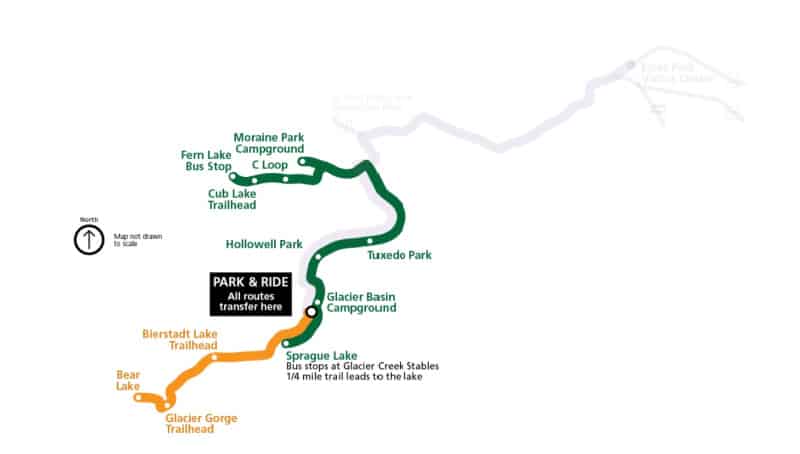
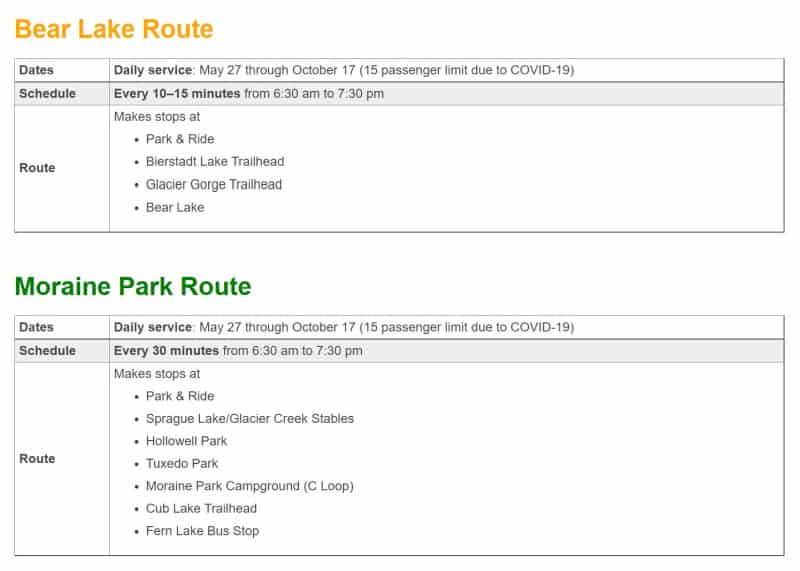
Timed Entry Reservations
The National Park Service is bringing back timed entry reservations for those looking to tor the park between May 26 through October 22, 2023, so be sure to make reservations and read the fine print if you’re hoping to visit during this time.
If you are visiting between October 12-May 27 or have a camping reservation, a guided trip, or a commercial tour, you will only need to pay the entry fee or have a National Park Pass.
Rocky Mountain National Park has seen unprecedented traffic congestion in recent years without any signs of slowing down. This forced the National Park Service to implement a ticketed entry program to relieve this congestion.
This means that now you must get a Park Pass or pay the entry fee plus obtain a timed ticketed entry pass between May 28 to October 11. You can get the ticketed entry pass at:
Online at recreation.gov
U.S. Callers (877)444-6777
International callers (606)515-6777
Use the Recreation.gov mobile app
Time Zone
MST - Mountain Standard Time
Pets
Unfortunately, pets are prohibited on Rocky Mountain National Park trails, tundra, and meadows. However, if you’re looking to hike with your pets, there are several trails and hikes around the Rocky Mountain National Park where you can take your furry friends.
You can find an extensive list of these trails and the pet etiquette on the respective hikes here.
Cell Service
Unfortunately, there is no cell service in Rocky Mountain National Park, so it’s best if you don’t rely on cell network to communicate while you’re in the park. The coverage throughout the park varies according to your region and depends a lot on your cell phone carrier.
Park Hours
Rocky Mountain National Park is open 24 hours, 365 days a year. However, some attractions remain closed in the winter, and real-time hours depend on ongoing weather conditions since it can get extremely harsh in Colorado.
Be sure to look up road closure and weather updates on @RockyNPS on Twitter before making the trip.
Trail Ridge Road is closed from approximately mid-October through late May.
Wi-Fi
You’ll be able to access free, public Wi-Fi at Beaver Meadows and Kawuneeche visitor centers.
Parking
Several parking lots are available at most major attractions at Rocky Mountain National Park. Since the park is frequently visited, the parking spaces near well-known landmarks fill up quite early in the morning, particularly spots near Glacier Gorge Trailhead, Bear Lake Trailhead, Wild Basin Corridor, etc. Additionally, when the weather is stormy or snowy, the roads leading to the park can shut so plan your route in accordance with any harsh weather forecasts.
Food/Restaurants
The only place to get food within the boundaries of the Rocky Mountain National Park is the Café at Trail Ridge.
The Café is operational during the months that Trail Ridge is open for visitors and is a one-stop-shop for all your snack and beverage needs within the park.
On a cold fall day, you’ll be able to enjoy a hot espresso and hot dog as you take a break from all the hiking you’ll be doing at Rocky Mountain National Park.
Gas
There are no gas stations present within the Rocky Mountains National park. The nearest gas station is located 50 miles between Grand Lake and Estes Park communities.
Drones
Drones are not permitted within National Park Sites.
Don't forget to pack
Insect repellent is always a great idea outdoors, especially around any body of water.
We use Permethrin Spray on our clothes before our park trips. Please read my article on preventing biting insects while enjoying the outdoors.
Sunscreen - I buy environmentally friendly sunscreen whenever possible because you inevitably pull it out at the beach.
Bring your water bottle and plenty of water with you. Plastic water bottles are not sold in the park.
Sunglasses - I always bring sunglasses with me. I personally love Goodr sunglasses because they are lightweight, durable, and have awesome National Park Designs from several National Parks like Joshua Tree, Yellowstone, Hawaii Volcanoes, Acadia, Denali, and more!
Click here to get your National Parks Edition of Goodr Sunglasses!
Binoculars/Spotting Scope - These will help spot birds and wildlife and make them easier to identify. We tend to see waterfowl in the distance, and they are always just a bit too far to identify them without binoculars.
Electric Vehicle Charging
Unfortunately, there are no charging stations inside the national park, but you’ll be able to find chargers in Estes Park (close to three of the park’s four entrances on its East side) and Grand Lake (close to the park’s fourth entrance, located on its Westside).
Accessibility
The National Park Service strives to make the parks accessible to all. The Rocky Mountain National Park has several landmarks that are easily accessible, like visitor centers, self-guided trails, campgrounds, scenic lookouts, and more.
Here’s a list of some accessible trails within the park -
- Bear Lake (9,475 feet) - Located at a high altitude, this half-mile hike is a gravel trail surrounding the spectacular Bear Lake.
- Coyote Valley Trail (8,840 feet) - An easy gravel 1-mile trail that crosses the Colorado trail and leads you to the Kawuneeche Valley.
- Lily Lake (8,880 feet) - A primary trail by Lily Lake with stunning overlooks and near an accessible fishing pier.
- Sprague Lake (8,690 feet) - This half-mile hike circles the beautiful Sprague Lake and has benches and accessible fishing docks along the trail. It’s also located near an accessible campground.
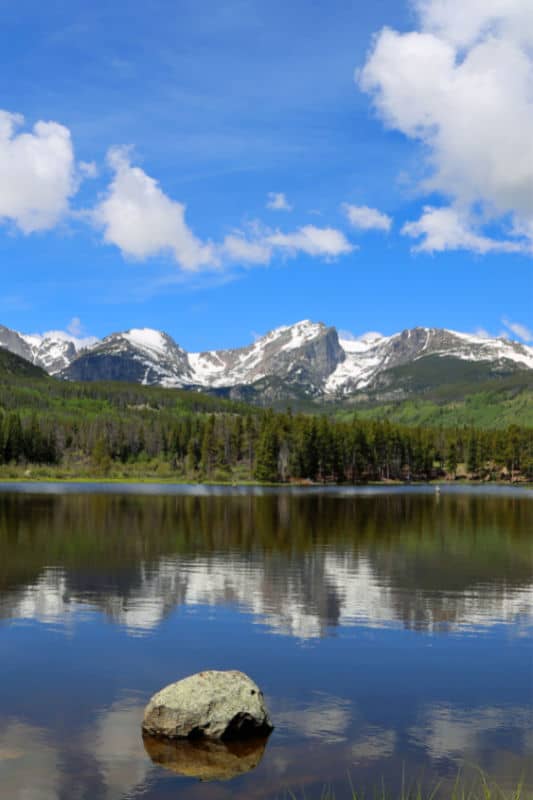
Details about Rocky Mountain National Park
Size - 265,807 acres
Rocky Mountain NP is currently ranked at 26 out of 63 National Parks by Size.
Date Established
After the region had piqued people’s interest from across the country, several individuals and organizations came together to establish the area as a national park.
While the National Park Service was formally formed in 1916, the bill to declare the region a national park was passed by Congress and signed by President Woodrow Wilson giving rise to the famous Rocky Mountain National Park.
Visitation
In 2021, Rocky Mountain NP had 4,434,848 park visitors.
In 2020, Rocky Mountain NP had 3,305,199 park visitors.
In 2019, Rocky Mountain NP had 4,670,053 park visitors.
Learn more about the most visited and least visited National Parks in the US
National Park Address
1000 US Hwy 36
Estes Park, CO 80517
United States
Rocky Mountain National Park Map
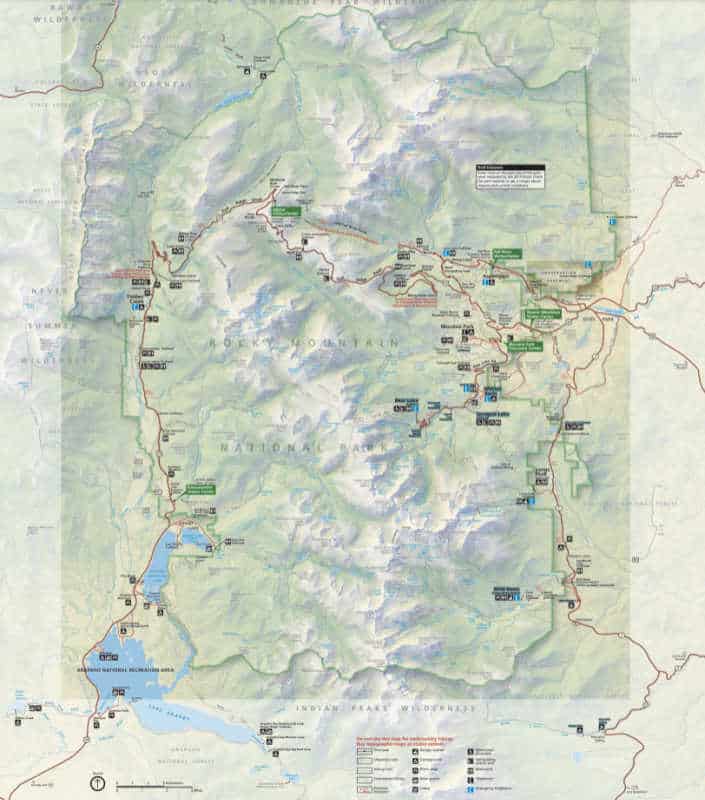
For a more detailed map, we like the National Geographic Trails Illustrated Maps available on Amazon.
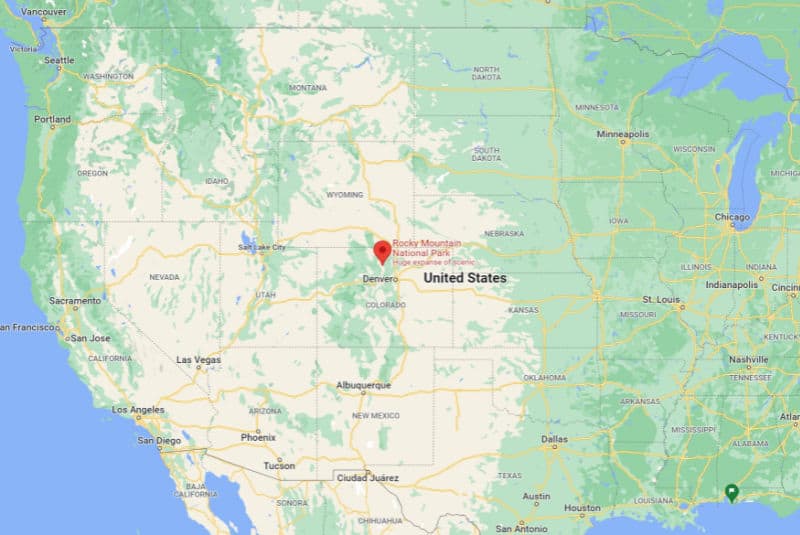
Where is Rocky Mountain National Park?
The Rocky Mountain National Park is located in Northern Colorado, 55 miles northwest of Denver. The region is home to alpine valleys, the rocky mountains, several pristine clear lakes, tundra basins, and other unique topography, flora, and fauna.
Estimated distance from major cities nearby
- Estes Park, CO - 8 miles
- Boulder, CO - 44 miles
- Denver, CO - 78 miles
- Winter Park, CO - 111 miles
- Grand Lake, CO - 147 miles
- Colorado Springs, CO - 138 miles
- Grand Junction, CO - 270 miles
- Salt Lake City, UT - 428 miles
- Albuquerque, NM - 517 miles
Estimated Distance from nearby National Park
Great Sand Dunes National Park - 303 miles
Black Canyon of the Gunnison National Park - 278 miles
Arches National Park - 377 miles
Canyonlands National Park - 391 miles
Mesa Verde National Park - 415 miles
Grand Teton National Park - 431 miles
Bryce Canyon National Park - 566 miles
Yellowstone National Park - 616 miles
Where is the National Park Visitor Center?
In light of the ongoing health crisis (COVID-19), visitor centers in Rocky Mountain National Park are operating differently, so keep that in mind before you plan your trip.
Alpine Visitor Center
It is open from late May through mid-October (during the months that Trail Ridge Road is open to visitors).
Operational Hours:
Late May to Mid-June: 10:30 AM - 4:30 PM
Mid-June to Mid-October: 9:30 AM - 4:30 PM
Located by Trail Ridge Road (one of the most scenic drives in the park), the Alpine Visitor Center is the visitor center at the highest elevation in the entire National Park system set at 11,796-ft.
Here you’ll be able to get all the information you need with pamphlets, maps, and park rangers present in the center. You’ll also be able to get your stamps, snacks, and catch a panoramic glimpse of the valley.
Beaver Meadows Visitor Center
It is open year-round, with reduced hours in Fall, Winter, and Spring. It is closed on Thanksgiving and Christmas Day.
Operational Hours:
Spring: 9:00 AM - 4:30 PM
Summer:
Fall/Winter: 9:00 AM - 4:30 PM
Located west of Estes Park on US Highway 36, beaver Meadows Visitor Center will be on ou left if you enter via US. Highway 36. The visitor center is home to the iconic Rocky Mountain Conservancy Nature Store, from where you can purchase gits, books, souvenirs, and more! The visitor center is also well-equipped with basic amenities and all the information you need regarding the park.
Fall River Visitor Center
It is open year-round; however, with the possibility of reduced hours in Winter, It is closed on Thanksgiving and Christmas Day. Due to COVID-19, the number of people permitted in the center at once is restricted.
Operational hours:
Year-round: 9:00 AM - 5:00 PM
It is located on US Highway 34, five miles west of the town of Estes Park. The visitor center shares the building with Gateway Store, where you’ll be able to find unique gifts and every possible souvenir to remember your trip to the Rocky Mountain National Park by.
Kawuneeche Visitor Center
It is typically open year-round. However, due to the current health crisis, exceptions are in place with reduced hours in Fall, Winter, and Spring. It is closed on Thanksgiving and Christmas Day.
Operational hours:
Spring: 9:00 AM - 5:00 PM
Summer: 9:00 AM - 5:00 PM
Fall/Winter: 9:00 AM - 4:30 PM
Located about a mile north of Grand Lake on the east side of Trail Ridge Road or US. Highway 34 at the entrance to the park, the Kawuneeche Visitor Center, has all the park information you could need, along with a friendly park ranger to guide you. At this visitor center, you’ll also be able to shop for books, gifts, and one-of-a-kind souvenirs to remember your trip by.
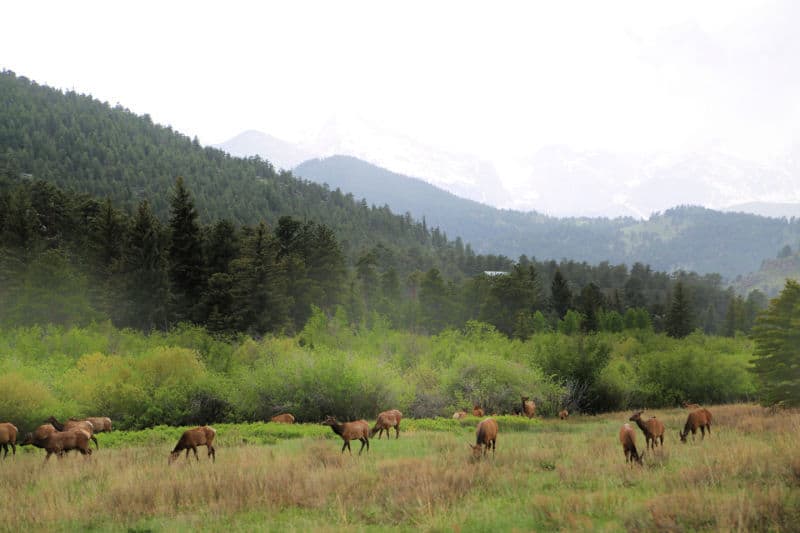
Getting to Rocky Mountain National Park
Closest Airports
Longmont Municipal Airport (LGM)
Fort Collins-Loveland Municipal Airport (FNL)
Boulder Municipal Airport (WBU)
Rocky Mountain Metropolitan Airport (BJC)
International Airports
Denver International Airport (DEN)
Regional Airports
Cheyenne Regional Airport (CYS)
Laramie Regional Airport (LAR)
Colorado Springs Airport (COS)
Driving Directions
The Rocky Mountain National Park occupies 265,807 acres in Northern Colorado and is close to two gateway towns, namely Estes Park and Grand Lake.
It is important to note that Trail Ridge Road remains closed from approximately mid-October to mid-May (so plan accordingly and read up on current road conditions before you make the drive).
From Denver, Colorado
70 miles, 1.5 hours
From W Colfax Avenue, you’ll get on Interstate 25 North towards Ft. Collins. Then, you’ll take Exit 217 A to merge with US Route 36 West towards Boulder, and you’ll make it to your destination.
From Colorado Springs, Colorado
130 miles, 2.5 hours
From W Bijou Street, you’ll get on Interstate 25 North towards Boulder County. Then, you’ll take Exit 217 A to merge with US Route 36 West towards Boulder, and you’ll make it to your destination.
From Grand Junction, Colorado
270 miles, 5 hours
From S 14th Street, you’ll get on Interstate 70 East and drive on it for about 200 miles. You’ll then take Exit 243 toward Hidden Valley and continue on to Colorado Route 72 West, making it to your destination.
Best time to visit Rocky Mountain National Park
The gorgeous Rocky Mountain National Park is considered to be an all-weather park, and no matter which time of year you visit, your trip is sure to be brilliant.
However, with its unique climate and topography, your experience in the park in some months is bound to be different than others.
Weather and Seasons
Spring
The springtime in the region is usually associated with the flowers blooming, snow melting, and climate becoming warmer. Spring is at the tail-end of the off-season for the park, as many attractions may be subject to closure due to harsh weather conditions until late May.
If you’re looking to visit with lesser crowds enjoy the melted snow caps and slightly chilly weather, visiting in the Spring will be a good time!
Summer
Visiting the Rocky Mountain National Park in the summer is considered ideal, and the months from June to September are the peak tourist season for the park.
Though the park is open year-round, some parts of the park can be closed down in other seasons due to harsh weather, but in the summer, you’ll be free to explore all the park has to offer.
Though it’ll be peak tourist season, as long as you reach the attractions early in the day, you’ll be able to go on hikes, visit scenic overlooks to get a breathtaking view of the park, and enjoy your time peacefully.
Autumn/Fall
The beginning of autumn is again considered one of the best times to visit as you’ll be able to truly experience every different landmark in the park and even watch the foliage turn all kinds of colors. Particularly during this time, the sunrises and sunsets are truly magical, and coupled with the majestic alpine valleys and mountain peaks, the park in the fall is genuinely a delight!
Winter
Once October comes to an end, the weather in the region can become harsh, leading to hail, heavy rainfall, snowstorms, and more. If you’re looking to take a more-isolated and quiet trip to the park, visiting in the winter with your snow boots isn’t a terrible idea.
Through January and February usually witness aplenty of snow, with temperatures in the 20s or 30s in the day and below zero at night; if you’re looking for a picturesque winter getaway, the Rocky Mountain National Park in the winter is the place for you!
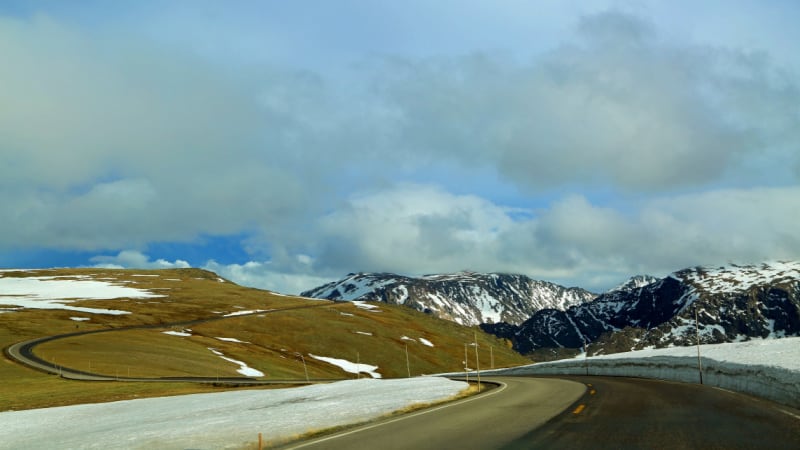
Best Things to do in Rocky Mountain National Park
There are so many epic things to do while visiting Rocky Mountain NP.
Trail Ridge Road
One of the most scenic drives, the Trail Ridge Road, has been designated as an All American Road. With panoramic views of the Rocky Mountains in every direction, this iconic drive is known to be able to take its travelers 4000 ft. up in altitude within a matter of minutes. Trail Ridge Road at its highest point is 12,183 feet above sea level.
On a trip like no other, you’ll catch views that you’re sure to remember for the rest of your life.
Bonus tip: Remember to stay hydrated when you’re on the drive, especially if you’re prone to altitude sickness.
Old Fall River Road
Another one of the park’s most prized possessions, the Old Fall River Road, became the first auto route connecting travelers to the park’s high country.
A classic “motor nature trail,” this route has no guard rails but is considered extremely safe. A journey down this winding, narrow road is for those looking to take a slow, tranquil drive amongst the mountainous region and connect with the natural beauty in the area.
This 11-mile long route was once used by the Paleo Indians to access the park’s territory and is evidence of their contribution to the park’s beauty today. Bonus: you might also spot some Elk at the end of the road!
Wildlife viewing
The Rocky Mountain National Park is considered to be one of the top parks to spot some wildlife.
The alpine valley, mountain surrounded park is home to animals like Elk (the park has its own Rocky Mountain Elk species that inhabit the area), Moose, Bighorn Sheep, Black Bears, Marmots, Chipmunks, and so much more. You’ll also be able to spot unique insects (plenty of butterflies) and reptiles in the park.
Junior Ranger Program
Located on the east side of Rocky Mountain National Park along Trail Ridge Road in the Summer at Hidden Valley is the Junior Ranger Headquarters! A one-stop shop for you to partake in a ranger-led program, complete your book, and earn your badge for the Rocky Mountain National Park.
Bird Watching
The Rocky Mountain National Park houses up to 280 bird species. With the region’s ever-changing climate and unique topography, the area’s bird species have had to adapt according to the weather conditions and have evolved per their habitat.
The most-searched-for bird in the park is the white-tailed ptarmigan, the only species that reside in the region but doesn’t migrate at any point in the year.
The National park Service recommends that if you’re looking to spot one, go on a hike in the tundra basin, and if you don’t make too much noise and get lucky, you’ll catch a glimpse of the beautiful bird.
Horseback Riding
Since the park’s conception in 1915, horseback riding has remained a tradition in the Rocky Mountain National Park. The park has two stables - Glacier Creek Stables and Moraine Park Stables, with several others in the region outside the park’s boundary. Horseback riding in the valley is one of the unique ways to explore the area, discover flora and fauna, and interact with one of the most loving species ever!
Fishing
One of the most incredible activities in the park is going fishing. To restore and conserve natural aquatic environments and pay ode to the past inhabitants who spent a lot of time fishing, the national park allows you to go fishing as long as you have a valid Colorado fishing license. Be sure to check out the extensive guidelines and learn which are the permitted places to go fishing. Some of which are Mills Lake, Mirror Lake, Pettingell Lake, and Sky Pond.
Guided Tours
Guided tours are a great way to explore the park, especially if you are visiting in the summer and have missed your opportunity on the ticketed day-use entry that is now required in the busy summer months.
You can also get a professional guide that is there to help you make the most of your trip to the park.
From Estes Park - Rocky Mountain Safari Tour
Be guided through the majestic wonders of Rocky Mountain NP on this national park safari tour. There are multiple stops along the way. This tour captures the most scenery and gives you the most opportunities to spot wildlife.
From Denver - Sightseeing with Picnic Lunch
Discover Rocky Mountain NP on a full-day guided tour. Take in mountain views at Many Parks Curve, explore Horseshoe Park, and visit the hotel that inspired the famous novel "The Shining."
From Denver - Rocky Mountain Day Trip and Lunch
Connect with nature on this day trip from Denver to the Rocky Mountain NP. See the Flatirons sandstone formations, the Stanley Hotel from "The Shinning" film, and stop for a picnic lunch.
From Estes Park - Bear Lake Corridor Tour
This is a specialty tour that takes you to the Bear Lake Corridor in Rocky Mountain.
From Longmont - Rocky Mountain Scenic Airplane Flight
Take to the skies for a 30-minute private flight overlooking the peaks of Rocky Mountain National Park and Estes Park. Enjoy a guided tour and stunning views of Colorado’s breathtaking landscapes.
From Denver - Rocky Mountain Jeep Tour with Picnic Lunch
Explore Rocky Mountain National Park in a Jeep with a naturalist guide. Marvel at unique flora and fauna while learning about spectacular geology and history. Stop for a picnic lunch along the way.
From Denver - Guided Hiking Tour
Explore the Rocky Mountain National Park on a guided hiking tour from Denver. Enjoy the scenic beauty of the national park with entrance fees and a picnic lunch included as part of the tour.
Hiking in Rocky Mountain National Park
A paradise for hikers, the Rocky Mountain National Park is home to 355 miles of hiking trails, ranging from strolling walkways to rugged, strenuous uphill hikes.
With most of the trails being high-altitude hikes, it’s essential to take sufficient rest, stay hydrated at all times, and choose the routes wisely as per your training and physical abilities.
Some of the most iconic trails are - the Bear Lake trail loop, Sprague Lake loop, Boulder Brook Hike, Mills Lake Hike, Twin Sisters Peak hike, and so many more.
Irrespective of the trails you choose to take on, be sure to take the ten essentials for outdoor survival with you as you immerse yourself in the park’s natural beauty.
Bear Lake
One of the many beautiful lakes that lie within the park boundary, Bear Lake is located at the tail-end of Bear Lake Road, which is 9 miles from the turn-off at US. Highway 36.
Situated at nearly 10,000 ft., this high-altitude lake is one of the most photographed parts of the park.
The pristine lake sits at the foothills of Hallett Peak and the continental divide and can be accessed via an easy and accessible half-mile loop hike.
The lake is also the starting point for plenty of the hiking trails of the national park that range from being amateur, easy trails to challenging and high-intensity hikes.
Lily Ridge Trail
This 1.2-mile roundtrip climb around Lily Lake may be a favorite for families and guests that don’t want to commit to a long hike in the snow and are seeking out generally flat terrains. Including an incredible sight of the eastern side of Longs Peak “The Diamond,” this path circles Lily Lake and maybe a 15-minute drive south of Estes Park.
Gem Lake
This trek concludes with a beautiful alpine lake with spectacular Rocky Mountain National Park views
Emerald Lake Trail
This popular three-and-a-half-mile round-trip trek travels past Nymph Lake, Dream Lake, and Tyndall Creek, with stunning views of Longs Peak, Hallett Peak, and Flattop Mountain along the way, before arriving at the subalpine Emerald Lake at the height of 10,000 feet. Recent visitors advised arriving early at the trailhead to avoid congested circumstances on this popular hike. Visitors also recommend bringing slip-on spikes for your shoes unless you're traveling in the summer, as the route is likely to be snow-covered.
Cub Lake Trail
Cub Lake Trail is a 4.6-mile circle trail that leads to the western end of Moraine Park and is somewhat challenging. Its location is surrounded by meadows, wildflowers, and tiny lakes and is a great place to watch various animals. Many tourists claim to have seen moose and other animals in the area’s flora.
Cub Lake Trail is at its best when the area’s wildflowers bloom in a kaleidoscope display in the spring. In the fall, the route is alive with bright red and orange. While in the winter, cross-country skiing and snowshoeing are available. It would be a good idea to keep a mosquito repellent or insect spray with you.
Gem Lake - 3.4 miles, moderate.
This trek concludes with a beautiful alpine lake with spectacular views of Rocky Mountain National Park.
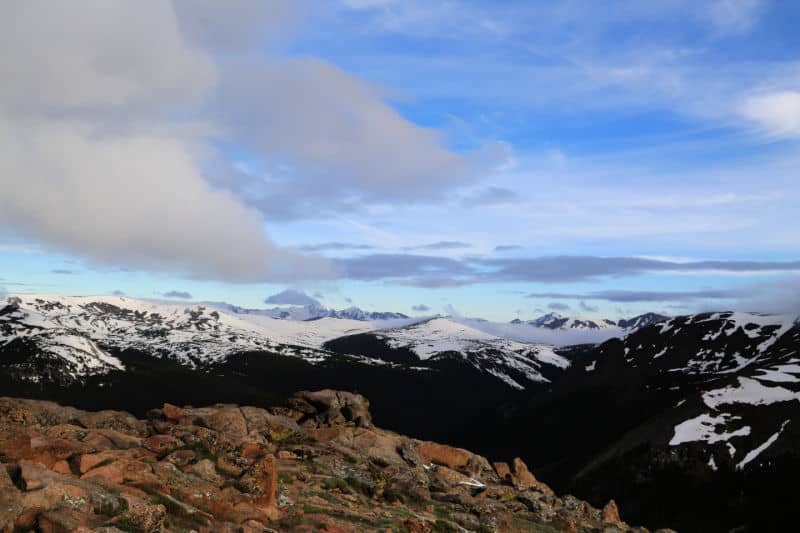
How to beat the crowds in Rocky Mountain National Park?
As one of the most visited National Parks in the country, Rocky Mountain National Park has its fair share of crowds that you just can’t avoid. However, visiting at certain times of the year and detailed planning of the times in the day to visit certain attractions will allow you to avoid most crowds.
The national park’s seasons are divided into the off-season and peak seasons.
Peak season is from June until mid-October, when all parts of the park are accessible, beautiful, and visited by most tourists.
Visiting during the off-season, though it may lead to you not being able to see attractions that close down due to harsh weather conditions will undoubtedly lead to a more tranquil and isolated visit.
In addition, visiting the most famous attractions early in the day and taking time later to explore some more uncommon but still beautiful landmarks within the park is a great way to dodge the crowds.
Especially with the timed entry reservations being required to enter the park between May 27 and October 10, 2022, planning your trip to the nitty-gritty hours of the day could be beneficial in avoiding crowds if you happen to visit in the peak season.
Where to stay when visiting Rocky Mountain National Park
There are no National Park Lodges within the park.
Nicky's Resort - Nicky's Resort provides amenities like a terrace and a restaurant. Stay connected with free in-room Wi-Fi.
Alpine Trail Ridge Inn - At Alpine Trail Ridge Inn, you can look forward to game and wildlife viewing, a terrace, and a firepit. For some rest and relaxation, visit the hot tub. The onsite restaurant, Bird and Jim Restaurant, features brunch and happy hour. In addition to a coffee shop/café and a bar, guests can connect to free in-room Wi-Fi.
Silver Moon Inn - Silver Moon Inn provides amenities like free breakfast and laundry facilities. Stay connected with free Wi-Fi in public areas.
Ponderosa Lodge - Consider a stay at Ponderosa Lodge and take advantage of a firepit, a garden, and a playground. Adventurous travelers may like the fishing at this lodge. For some rest and relaxation, visit the hot tub. In addition to a library and an outdoor entertainment area, guests can connect to free in-room Wi-Fi.
Brynwood on the River - Brynwood on the River provides a hot tub and more. Guests can connect to free in-room Wi-Fi.
The Historic Crag's Lodge - At The Historic Crag's Lodge, you can look forward to a library, laundry facilities, and a hot tub. Free in-room Wi-Fi and a restaurant are available to all guests.
Click on the map below to see current vacation rental and hotel rates near the park including Estes Park, Colorado.
National Park Camping
For a fun adventure check out Escape Campervans. These campervans have built in beds, kitchen area with refrigerators, and more. You can have them fully set up with kitchen supplies, bedding, and other fun extras. They are painted with epic designs you can't miss!
Escape Campervans has offices in Vancouver, Seattle, Portland, San Francisco, Las Vegas, Los Angeles, Phoenix, Salt Lake City, Denver, Chicago, New York, and Orlando
Aspenglen Campground
Season: Summer, Late May to mid-October
Campsites: 52 (RVs permitted, up to 30 ft in length)
Accessibility: Yes, two ADA sites are available
Located in proximity to the Fall River Entrance to the park, the Aspenglen Campground is surrounded by gorgeous alpine trees and meadows. It requires a reservation and has flush toilets, potable water, firewood and ice, and other basic amenities and costs $30/night.
Glacier Basin Campground
Season: Summer, Late May to mid-October
Campsites: 150 (RVs permitted, up to 35 ft in length)
Accessibility: Yes, four ADA sites are available
Located near US. Highway 36 near Estes Park, the glacier Basin Campground is a scenic site with a mix of meadows, alpine trees, and shrubs. It requires a reservation and has flush toilets, potable water, firewood and ice, and other basic amenities and costs $30/night.
Moraine Park Campground
Season: Open year-round, with limited amenities in the winter
Campsites: 244 (RVs permitted, up to 40 ft in length)
Accessibility: Yes, three ADA sites are available
Located near the Beaver Meadows Entrance on US. Highway 36, the Moraine Park Campground, is located north of Moraine Park and boasts scenic vistas of the park and the surrounding mountain peaks. It requires reservations in the summer and operates on a first-come,first-serve basis in the wintertime. It has flush toilets, potable water, firewood and ice, and other basic amenities and costs $30/night (summer) and $20/night (winter).
Timber Creek Campground
Season: Summer, Late May to mid-October
Campsites: 98 (RVs permitted, up to 30 ft in length)
Accessibility: Yes, four ADA sites are available
Located at 8900 feet along the gorgeous Colorado River about eight miles north of the Grand Lake entrance to the park, the Timber Creek campground is the only campground in the west part of the park. It requires a reservation and has flush toilets, potable water, firewood, and other basic amenities and costs $30/night.
Longs Peak Campground
Season: Summer, Late May to mid-October
Campsites: 26 (tent-only, RVs not permitted)
Accessibility: No, zero ADA sites are available
Located 20 minutes south of Estes Park on US. Highway 7, this campground is situated at an altitude of 9500 ft. Here you’ll have panoramic views of the lakes, the mountain peaks, the valley, and beyond. It is a first-come, first-serve-only campground with vault toilets and potable water and costs $30/night.
Parks Near Rocky Mountain National Park
Scotts Bluff National Monument
Sand Creek Massacre National Historic Site
Amache National Historic Site
Florissant Fossil Beds National Monument
Curecanti National Recreation Area
Check out all of the Colorado National Parks along with neighboring National Parks in Wyoming, Utah National Parks, Oklahoma National Parks, National Parks in New Mexico, National Parks in Nebraska, Kansas National Parks, and Arizona National Parks.
Colorado State Parks near Rocky Mountain NP include State Forest State Park, Lory State Park, Boyd Lake State Park, St. Vrain State Park, and Eldorado Canyon State Park.
